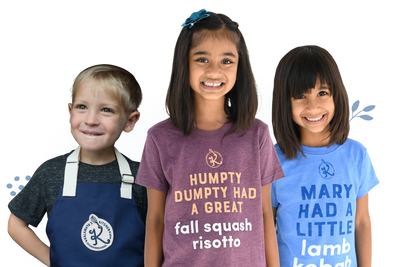
Taste Bud Profile
Avishar Barua

Chef Avishar remembers that his mother had trouble feeding him when he was a child—so he can directly empathize with parents struggling to do the same today, but also with the kids. Nostalgia inspires not only the foods he serves others today, but acts as a reminder to allow our adult selves to be childlike every now and again.



Avishar Barua: I was kind of hard to feed as a kid—my mom had trouble getting me to eat anything at all. So my mom would mix some ghee with rice and add a little salt, then make it into a little ball. Sometimes she’d put some chicken or some dal in there, and she’d leave the little rice balls on the table. She knew I wouldn’t eat them if she tried to force me, so she’d just leave them and I’d eat them when she wasn’t looking. That was one of my first and favorite foods—so when I started creating tasting menus, one of the first bites I’d make was a rice ball with something in it. People eat it and they’re like “this is so simple, why is it so good?” It’s just very easy to eat. Ghee, rice, and salt is still one of my favorite things to eat. It’s also how most of us were introduced to rice. This simple bite is one of the tenets of our culture. I think it feels like safety to anyone who grew up eating it.

I had a godmother who was South African, and whenever she’d babysit us, she’d make us these South African meatballs called Kool Frikkadel Cape Malay style. There was nothing too crazy about it, it was just a different kind of meatball for me, served with plain parboiled rice, seasoned with cumin, allspice, and nutmeg. She was one of the reasons I started cooking. I was always trying to make this dish. So when I got to college, I started trying to recreate it. It actually taught me a lot about technique too—for example, I didn’t know anything about browning meat.
Nothing about cooking was intuitive for me, but I did know I was trying to recreate a specific thing and I kept trying to figure it out.

I also have these very distinct fast food memories, partly because Taco Bell was delicious, but also because I just liked the concept of making anything into a taco. I liked eating with my hands, which is another thing that is very normal in Bengali or Indian culture but less normal here. When we’d go to a Chinese restaurant, I used to love this minced chicken in lettuce wraps, because to me it was like eating a taco. I still love the direct nature of eating with my hands. Pick it up, put it in my mouth. We touch everything else in life with our hands, and we make food with our hands, so I think it’s appropriate to enjoy the food with our hands too. It’s a good way to anticipate what you’re about to eat with more than just your senses of taste or smell. I always try to put a few dishes that are meant to be eaten with your hands on my menu.

I actually love it when kids come into the restaurant. I see it as an opportunity, both for me and for the kid! Even at super fine-dining restaurants, like WD-50, if a kid came in, we’d make a tasting menu for them too. When kids come to my restaurant now, I make sure they know that everything on my menu can be made for them, whether that means making something slightly smaller, or just adjusting a heat level slightly. And if they want something like grilled cheese, I’ll make it for them—but I’ll make the absolute best grilled cheese I can possibly make. It will be close enough but different from what they think they’re getting, and that’s a way of coaxing something into trying something new too. I think it’s important for adults to remember that sometimes it was tough to be a kid, and to feel forced to do something, and how resistant you were to that feeling when you were younger. It’s so much better to present something as an opportunity, or something special, than a directive of “you have to do this, or you have to try this.” Of course it’s important to encourage people to get over their resistance to things—my mind would be completely different if my parents hadn’t made me practice instruments when I was a kid, for example—but I think there’s a way to do it that encourages kids to want to do it too.

There’s a reason that nostalgia is a huge ingredient right now. We all kind of want to be kids again.
We overcomplicate things all the time. Sometimes it’s great to be reminded that you can be a kid again too. One of my favorite aromas of all time is my mom’s kaachi goat biryani. It’s buttery and warm and festive. I remember coming home when I was younger and the smell hitting me and I’d get so excited. And so would my friends, none of whom were Bengali or Indian, by the way. It’s so universally loved, biryani, probably because it has an amazing combination of flavors and textures but to me it’s the aroma more than anything. There’s a reason they seal the pot—it’s to keep that aroma in, and when you open it, it hits you with this sense of “this is everything I want to eat all at once.” That smell could lure all of my friends to my house to eat my mom’s cooking with their hands, a very real example of food bringing us all together.

